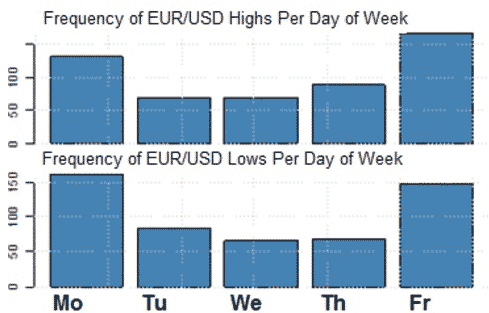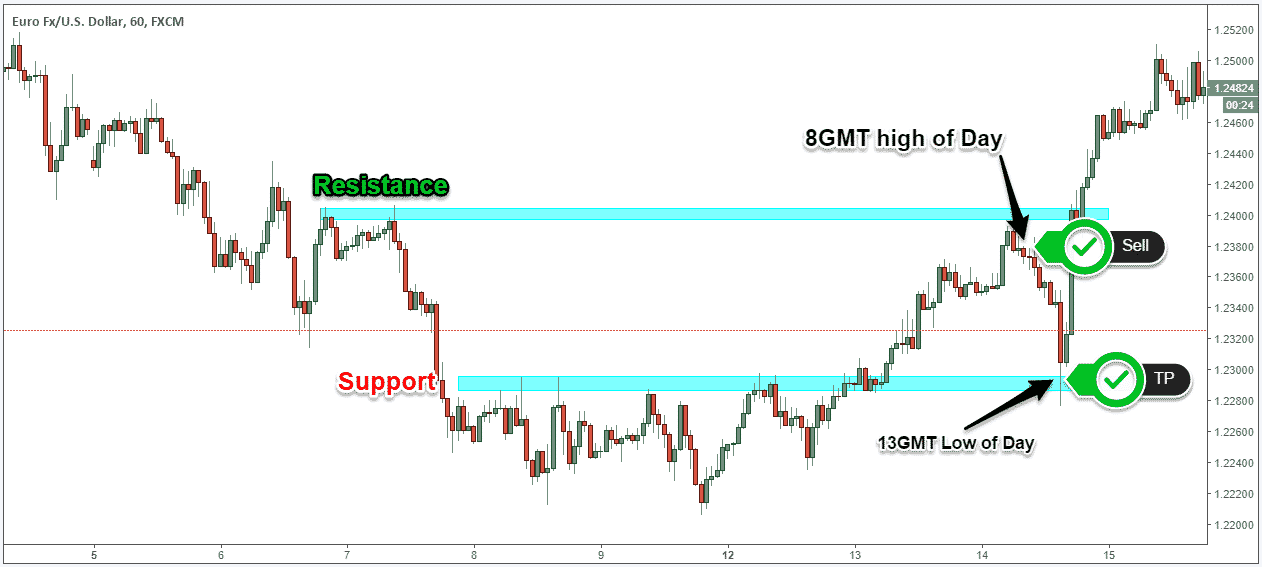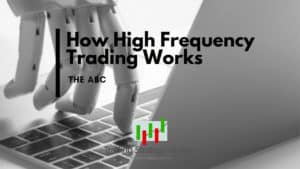Seasonality Trading Strategy – Follow the Smart Money

Seasonality Trading Strategy – Follow the Smart Money
The seasonality trading strategy is a new trading approach that brings a new dimension to analyzing markets. In this article, we’re going to talk about the Forex seasonal cycles and how they can improve your trading activity and why it should not be ignored.
Make sure to check out our guide to Forex trading for beginners.
It is no mystery that the world is full of cycles and we’re governed by them. The financial markets are not an exception to this rule.
The majority of traders will either use technical analysis, fundamental analysis, or a combination of both. But the time element, such as the time of the day, the day of the week, and the month of the year also play a big role in how certain FX pairs may behave.
When you focus your attention purely on price and time, without the noise of indicators, you may notice some pattern shows up during a certain time. These patterns are known as seasonal patterns or seasonal cycles. You can also read our best Gann Fan trading strategy.
Seasonality Definition
The seasonality definition says the seasonal patterns are a predictable change in price. They repeat every day, week, month, and year at the same period in time.
The seasonal cycles will only give you the tendency of a particular currency pair to bottom, top, rally, or fall at a certain point in time.
The seasonality is just an average. In this regard, it’s better not to use it in isolation. Rather, use it in combination with your technical analysis as the market can deviate from its Forex seasonal pattern.
A seasonal trading method can be used to predict future FX trends.
There are seasonal patterns, not only on a monthly basis but on every time level, this seasonality pattern reoccurs. They are visible so, in this regard, we’re going to start to look at every time level.
Make sure to also check out our simple day trading Forex strategy.
What is more important is that we’re going to try and apply these seasonal cycles to current price action and see if we can spot some trades.
Seasonality Trading System
A good seasonality trading strategy looks at the time factor with a top-down approach. This means that the seasonal pattern is broken down from the higher time frame all the way to the intraday seasonality patterns.
Moving forward, we’re going to examine the EUR/USD seasonal cycle and how to trade like a pro using seasonal investing strategies.
EUR/USD Monthly Seasonal Patterns
Even though you may be a short-term trader, it’s important to keep in mind the overall trend. If you’re a swing trader, you can use the monthly seasonal cycles to predict seasonal low points to buy in an uptrend and seasonal high points to sell in downtrends.
 The above figure shows the euro seasonality cycles over the last 5, 10 and 15 years.
The above figure shows the euro seasonality cycles over the last 5, 10 and 15 years.
Looking at just these tendencies of euro we can make an estimated guess of when EUR/USD is more likely to be stronger, or weaker or just consolidating:
- EUR/USD typically bottoms in mid-February.
- And then moves higher into mid-March where we see a short-lived pullback followed by another rally into the end of April.
- June is another month where EUR/USD starts bottoming.
- August is one of the worse months for the euro with the biggest decline but it’s followed by a quick rebound in September.
- Earlier September is the second-best month for the Euro. After October this seasonality cycles diverge and are less reliable.
EUR/USD Intraweek Seasonal Patterns
Now that we know when EUR/USD is more likely to bottom and top through the year, we can take it one step forward. We can see based on the seasonal trading strategies what the best day of the week to buy and sell is.
Not every day of the week is created equally or has the same level of trading activity.
Some days can be more active than others.
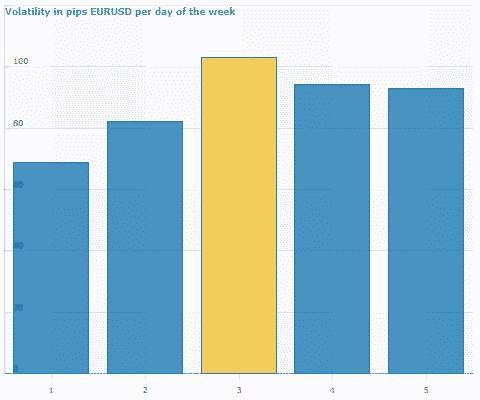
In the above figure, we show the EUR/USD volatility measured in pips per day of the week. This is also what we refer to as being the ATR (Average True Range).
According to the seasonality definition we look for patterns in all sorts of ways as long as we based our analysis on the time element.
We can observe since the beginning of the year, Wednesday is so far the most active day for EUR/USD in terms of pip movement, followed by Thursday and Friday.
Another major tendency that these seasonality patterns shows is the fact that EUR/USD will most likely set the high and the low of the week either at the beginning or at the end of the week (see Figure below).
A smart way to use this trading information is to buy bullish trends (sell bearish trends) early in the week. We can assume that if on Monday we established a swing low then the high probability scenario is for the market to hold to the upside through Friday.
Now, we can go one more time frame lower and see on an intraday basis what the best time to buy and sell currencies is and in this particular case what is the best time to buy and sell EUR/USD.
EUR/USD Intraday Seasonal Patterns
Before looking on how the intraday seasonal patterns portrait the market it’s important to be aware that we can divide our trading day into four major trading sessions: the Sydney session, the Tokyo session, the London session, and the New York session. During each of these sessions, liquidity is not distributed uniformly. This is one reason why these seasonality cycles appear on an intraday basis. Also read the guide to chart patterns here.
Next, we’re going to look at two types of intraday seasonality cycles that will help us improve our FX game:
- Intraday Volatility tendency;
- Intraday top/bottoms tendency;
In the below figure we show the EUR/USD volatility in pips per hour of the day from the beginning of the year. This chart shows the EUR/USD tendency to have two main peaks in volatility:
- One at around 7:00 GMT, with the maximum ATR (Average True Range) around 28 pips;
- The second one between 13:00-15:00 GMT, with the maximum ATR around 34 pips;
So, how is this information going to help you?
If you’re daytrading it will help you to time your trades much better. It will help you enter the market only around the time of the day when the ATR is at pick and it can show you a realistic expectation for the trade and how far away your TP should be.
Moving forward we’re going to look at the 10-year intraday seasonality cycles and EUR/USD top/bottoms tendency.
Usually it can be seen that the major intraday bottom is around 12:00 GMT right before the New York session so if your strategy for any given day is generating a buy signal this seasonality charts will help you time the market much better so you’ll be better off to wait for the 12:00 GMT before starting to buy. Also, read the
In the same circumstance, you should avoid buying at around 8:00-9:00 GMT as usually around that time EUR/USD produces an intraday seasonal top.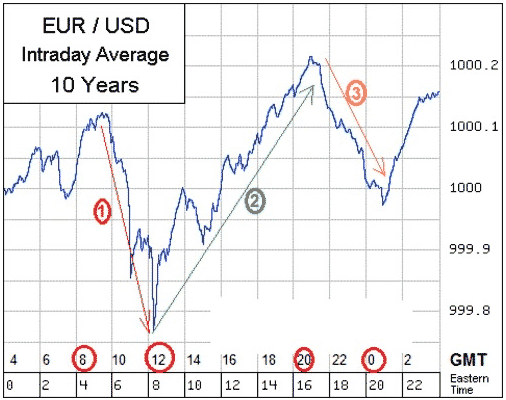
Seasonality Trading Strategy
Let’s apply what we have just learned and have a look at the last trading sessions (see Figure below). As you can see I’m not choosing some random dates just to fit in this seasonality cycles but instead we look at recent price action and see how the seasonality can help us in our trading operations.
The above figure represents the most recent EUR/USD price action.
The EUR/USD technical pattern should look familiar. We’re trading right into resistance level which means that we should expect a reaction lower. Secondly, from the intraday seasonal pattern, we know that right around 8:00 GMT we should expect a top to develop.
From the intraday volatility tendency, we also know that we have a pickup in volatility right around 7:00 GMT which again means that the reactions lower from resistance level should be significant. By using this information we could have sold EUR/USD at 8:00 GMT using a profit target that is in accordance with the intraday seasonal pattern.
We know that 13:00 GMT usually produces the low of the day. The technicals also suggest that we’re near support level which means that a bounce is more likely to happen so we better take profits.
Conclusion – Seasonality Trading System
The seasonality trading strategy works because the smart money is doing the same thing every single year more often than not. The month of the year or the day of the week and the time of the day can call the shots in any market. Here is another strategy called Time-Based Trading Strategy.
The seasonal cycle is another useful tool in your trading arsenal. We’re not saying to trade solely off of seasonality and forget anything else. We’re only giving you another trading tool that you can incorporate into your own trading strategy to gain a better edge. Click here to learn more about seasonal gold trading.
Thank you for reading!
Please leave a comment below if you have any questions about the seasonality trading system!
Also, please give this strategy a 5 star if you enjoyed it!
[ratings]
Please Share this Trading Strategy Below and keep it for your own personal use! Thanks Traders!


